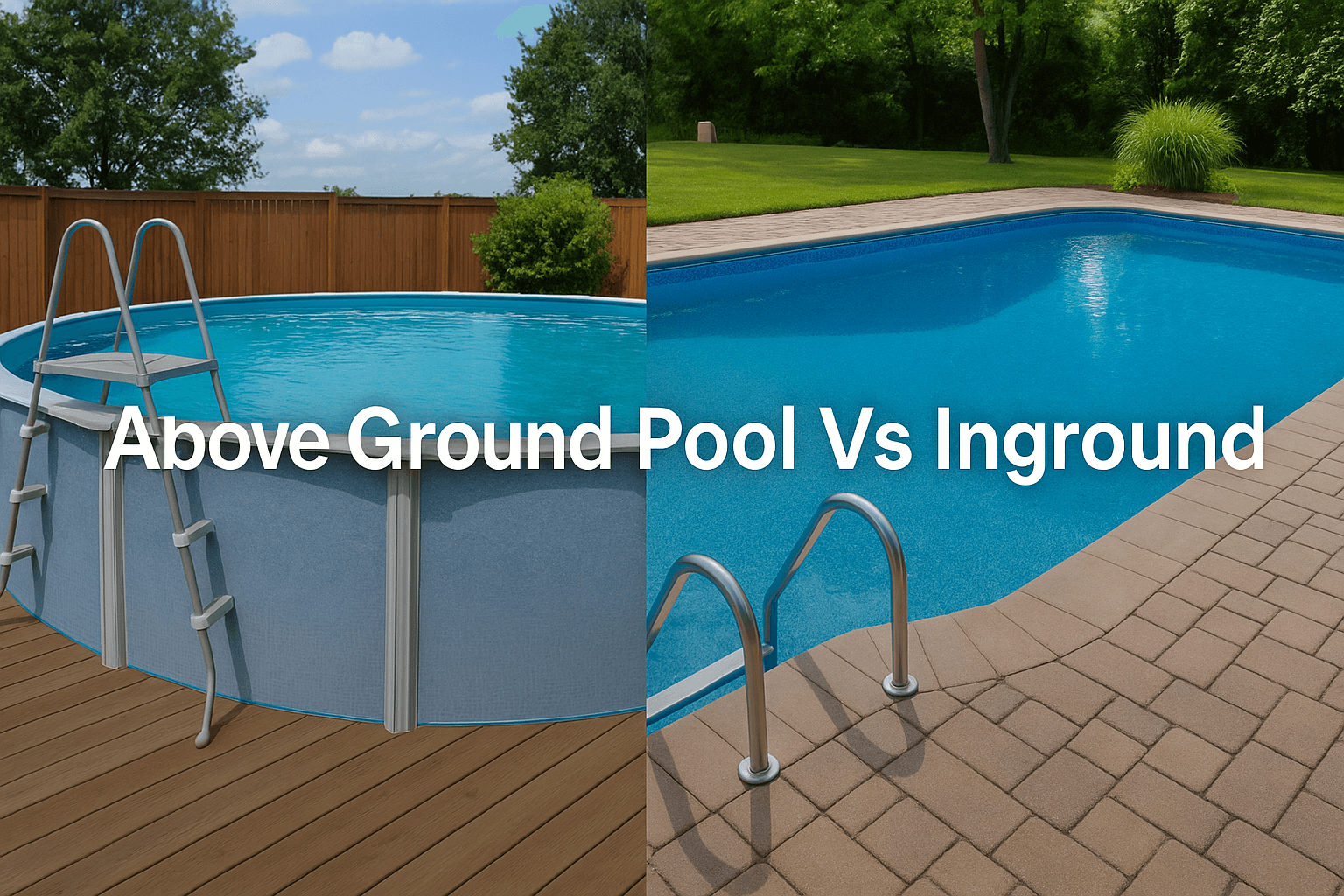
Above Ground Pool Vs Inground
Torn between going all-in with a posh sunken pool or keeping it easy with something above ground? You're not alone. Many UK homeowners are trying to decide which option gives the best splash for their cash.
Short answer? An above ground swimming pool UK setup is often cheaper, quicker to install, and far less hassle—especially with our unpredictable weather. But if you’re chasing that luxurious look and long-term value, an inground pool might be worth the dig. Keep reading as we break it all down.
Cost: Initial Investment and Long-Term Expenses
Purchase and Installation Costs
If you're working to a budget, above ground pools are a clear winner. They usually start from around £1,000, and the setup’s fairly straightforward. You won’t need to dig up your garden or hire a full team of contractors.
Inground pools? Whole different ballgame. Expect to spend anywhere between £15,000 and £30,000—sometimes more—depending on the size, shape, and extras like lighting or heating.
Maintenance and Running Costs
When it comes to ongoing costs, above ground pools keep things simple. Fewer parts, smaller volume, and easier access mean cheaper chemicals, quicker cleaning, and less stress overall.
Inground pools look amazing, but they do demand more maintenance. Balancing chemicals, cleaning the filters, and repairing wear and tear takes time and money. Think of it as owning a sports car—you’ll love the look, but upkeep’s part of the package.

Installation and Permanence
Installation Time and Process
Want to swim by the weekend? Above ground pools can be installed in a day or two. They're ideal for spontaneous summer plans or family weekends.
Inground pools are more of a long-term project. Installation includes excavation, plumbing, and permits—it can take weeks, not days. Great if you’re building your dream garden, but not ideal for quick wins.
Flexibility and Portability
One major bonus of above ground pools? You can take them down or move them. Whether you're redesigning the garden or relocating, they're far more flexible.
Inground pools are permanent fixtures. Once it’s in, it’s there for good. Make sure you’ve thought it through before the first shovel hits the soil.
Aesthetics and Landscaping
Blending into the Landscape
Let’s be honest—inground pools usually win on looks. They blend naturally with your garden and can be designed to match your outdoor vibe perfectly.
Above ground pools don’t always scream style, but with a bit of planning, they can still look smart. Surround them with greenery or position them strategically and they’ll look right at home.
Decking and Surrounding Features
Decking works wonders for both types. Inground pools often come with paved edges, loungers, and a sleek finish. Above ground pools benefit from raised decking, which not only looks sharp but adds safety and easy access.
Want to add a personal touch? Use planters, lighting, or even artificial turf to create a custom pool zone—whatever the type.

Making Your Final Choice: Above Ground Pool or Inground?
Durability, Lifespan, and Resale Value
Average Lifespan of Each Type
Inground pools are built to last. With regular care, they can hold up for 30 years or more.
Above ground pools have a shorter life—often around 7 to 15 years depending on the model. But replacing them is cheaper, and newer designs are more durable than ever.
Impact on Home Value
Looking to boost your property’s value? An inground pool might help—especially in homes where outdoor living is a selling point.
That said, above ground pools won’t hurt your home’s appeal if they’re neat and well-kept. They’re a perk for buyers who want summer fun without big maintenance commitments.
Safety and Insurance Considerations
Required Fencing and Barriers
In the UK, you’re not legally required to fence your pool—yet. But it’s highly recommended for safety, especially if kids are around. Inground pools, due to their accessibility, may require more barriers.
Above ground pools are naturally harder to access, which can make them a bit safer. Still, adding a safety ladder or barrier is a smart move.
The "Attractive Nuisance" Clause
Ever heard of the "attractive nuisance" clause? It’s a legal concept that says property owners must secure anything that might tempt kids—like a pool.
Inground pools are a bigger risk here. If someone wanders in and gets hurt, you could be liable. Above ground pools carry less risk but should still be secured with covers or fencing when not in use.
Above Ground Pool vs Semi Inground: A Closer Look
Key Differences in Construction and Cost
The Semi-Inground Hybrid Solution
Not sure if you want to go all in or keep it simple? Semi-inground pools offer a clever middle ground. They’re partially buried, which gives a more polished look than above ground models without the full-scale excavation.
Price Point and Installation Complexity
Costs fall between the two as well. Semi-inground pools aren’t as pricey as full inground builds, but you’ll pay more than you would for a basic above ground setup.
Installation takes longer than above ground but skips some of the heavy digging needed for fully sunken pools.

The Pros and Cons of Going Semi-Inground
Aesthetics and Accessibility
These hybrids often look sleeker and more permanent. And because they’re partially in the ground, they’re easier to step into—great for young kids or older swimmers.
Add some decking or raised landscaping and you’ll get that resort feel without breaking the bank.
Customisation and Longevity
Semi-inground pools offer solid durability and more styling options. You can tweak the shape, depth, and even materials to suit your space.
They’re also built to last longer than most above ground pools thanks to reinforced walls and a more stable base.
Still not sure which to choose? Think about your budget, space, and how long you want the pool to last. Whether you're planning weekend splashes or building your dream garden, there's a pool option to suit your home and lifestyle.
Have you checked out our other posts?
Above Ground Pool Vs Stock Tank


Leave a comment